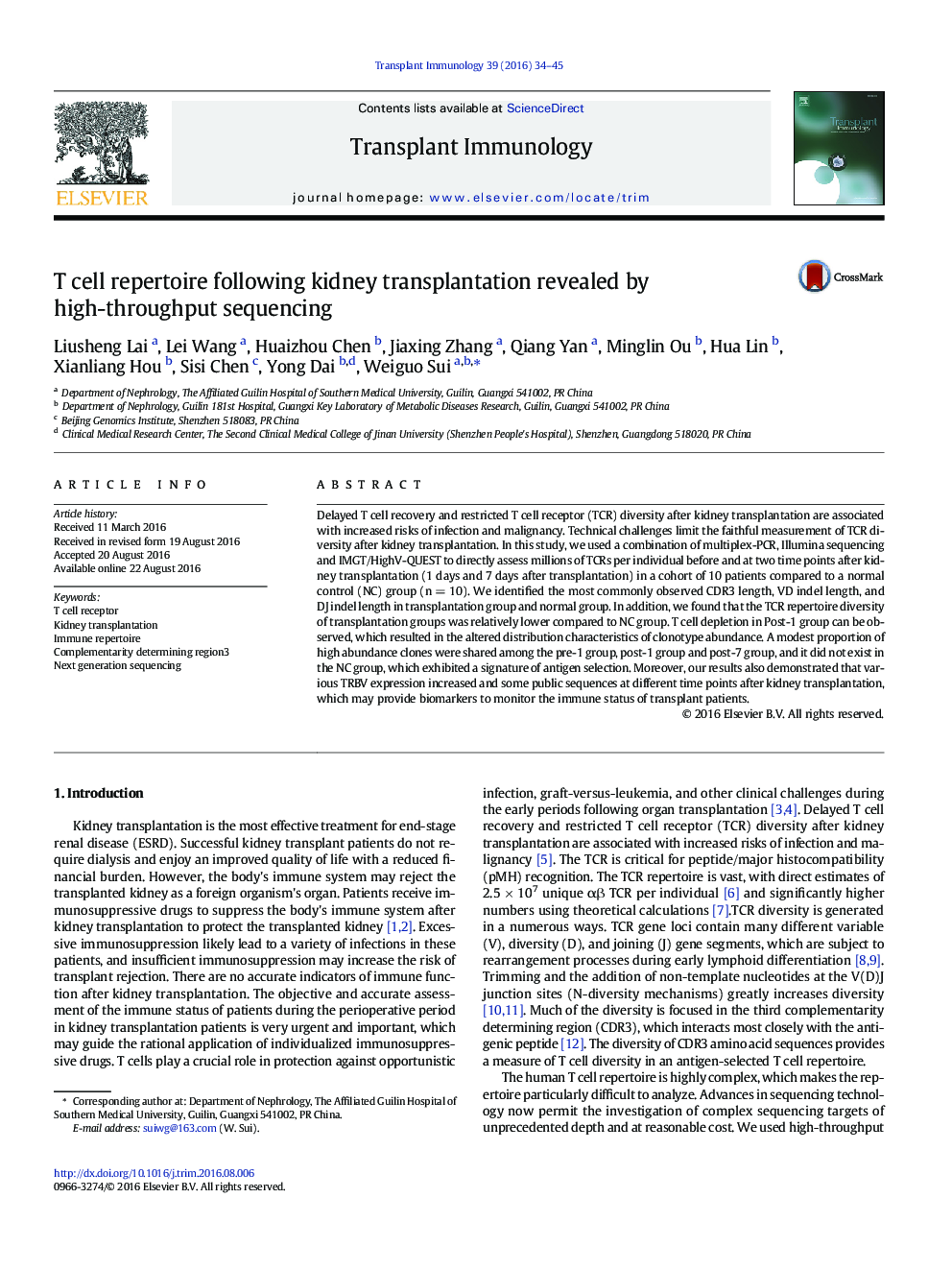| Article ID | Journal | Published Year | Pages | File Type |
|---|---|---|---|---|
| 5670468 | Transplant Immunology | 2016 | 12 Pages |
â¢The most commonly observed CDR3 lengths, VD and DJ indel lengths in each group were identified.â¢The TCR repertoire diversity of transplantation groups was relatively lower compared to NC group.â¢Many high abundance clones were shared among transplantation groups, which exhibited a signature of antigen selection.â¢Different TRBV segments usage, V-J combinations and some public sequences in each group were identified.
Delayed T cell recovery and restricted T cell receptor (TCR) diversity after kidney transplantation are associated with increased risks of infection and malignancy. Technical challenges limit the faithful measurement of TCR diversity after kidney transplantation. In this study, we used a combination of multiplex-PCR, Illumina sequencing and IMGT/HighV-QUEST to directly assess millions of TCRs per individual before and at two time points after kidney transplantation (1 days and 7 days after transplantation) in a cohort of 10 patients compared to a normal control (NC) group (n = 10). We identified the most commonly observed CDR3 length, VD indel length, and DJ indel length in transplantation group and normal group. In addition, we found that the TCR repertoire diversity of transplantation groups was relatively lower compared to NC group. T cell depletion in Post-1 group can be observed, which resulted in the altered distribution characteristics of clonotype abundance. A modest proportion of high abundance clones were shared among the pre-1 group, post-1 group and post-7 group, and it did not exist in the NC group, which exhibited a signature of antigen selection. Moreover, our results also demonstrated that various TRBV expression increased and some public sequences at different time points after kidney transplantation, which may provide biomarkers to monitor the immune status of transplant patients.
